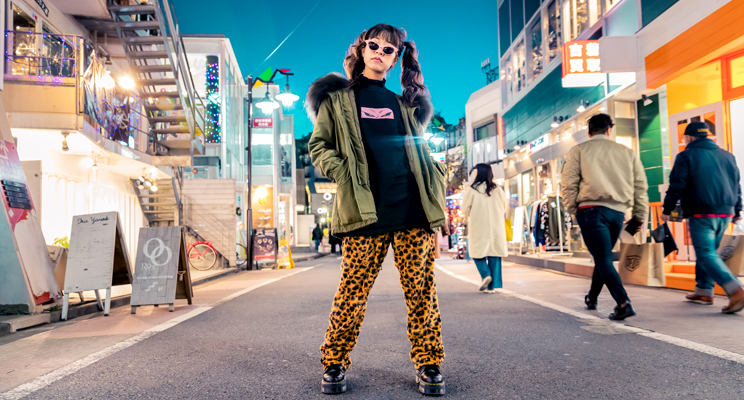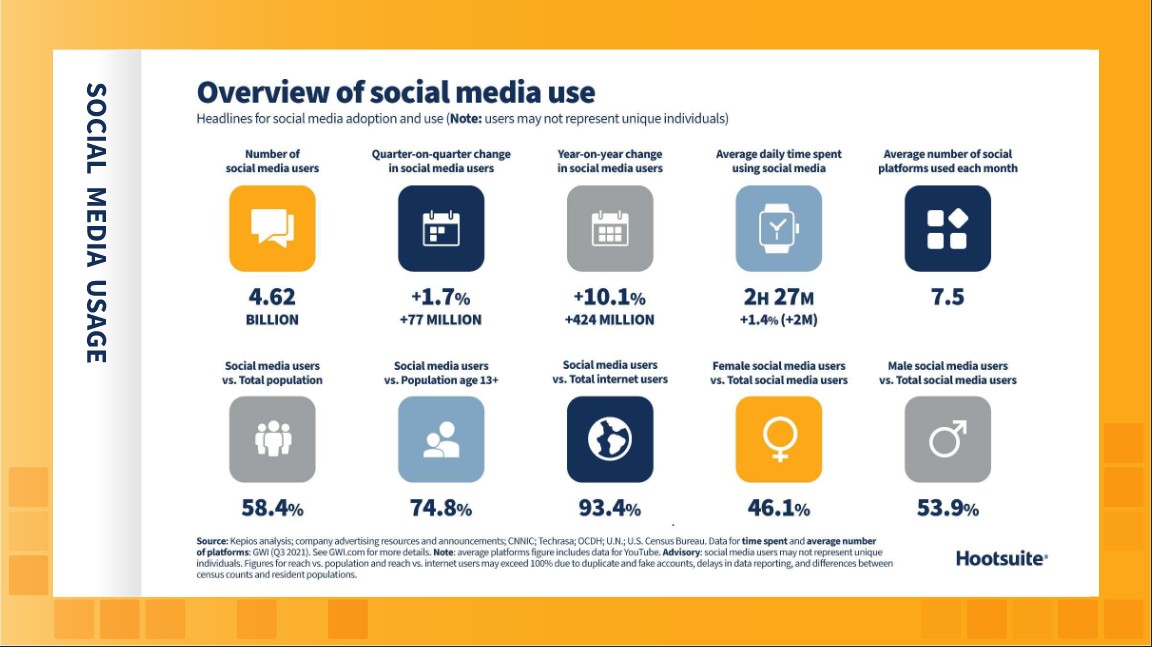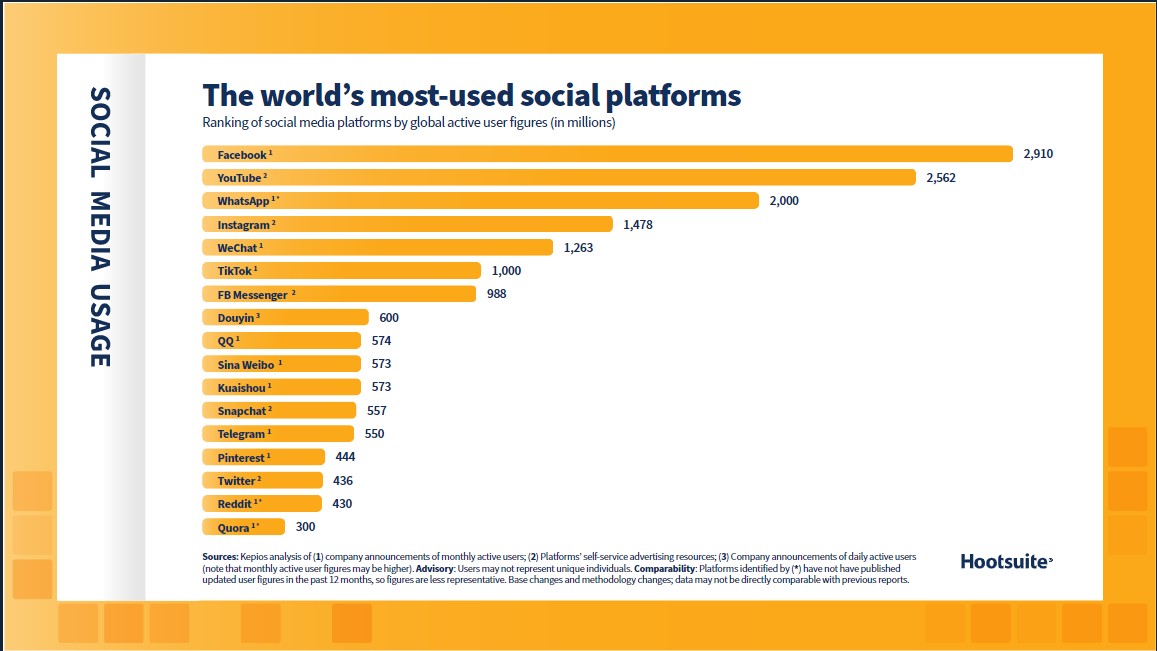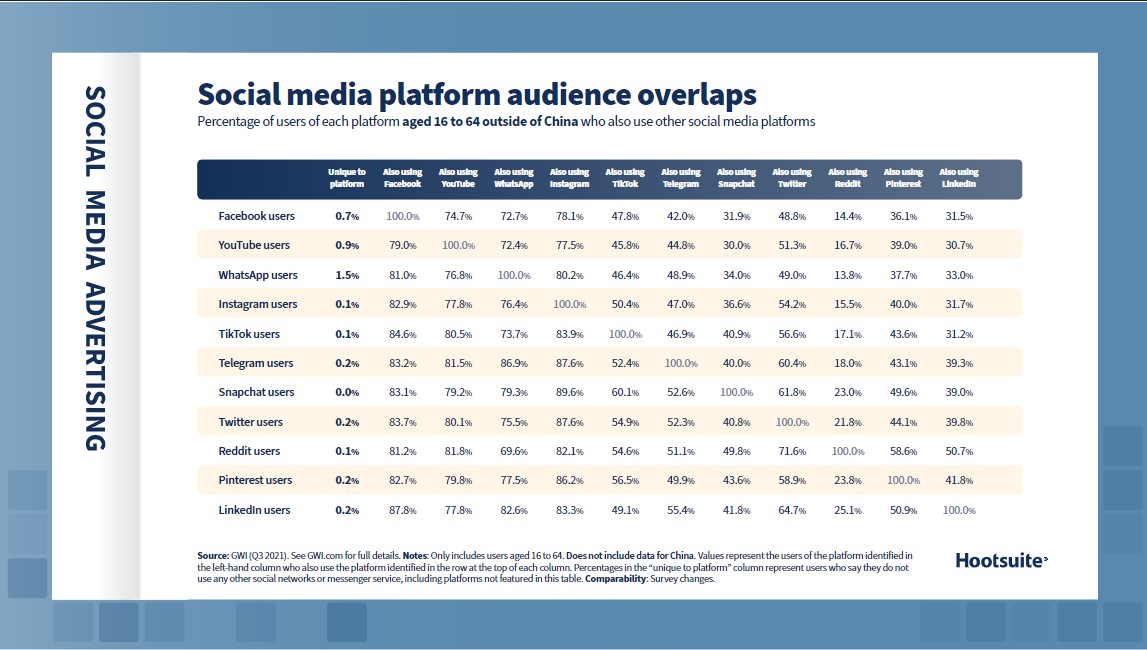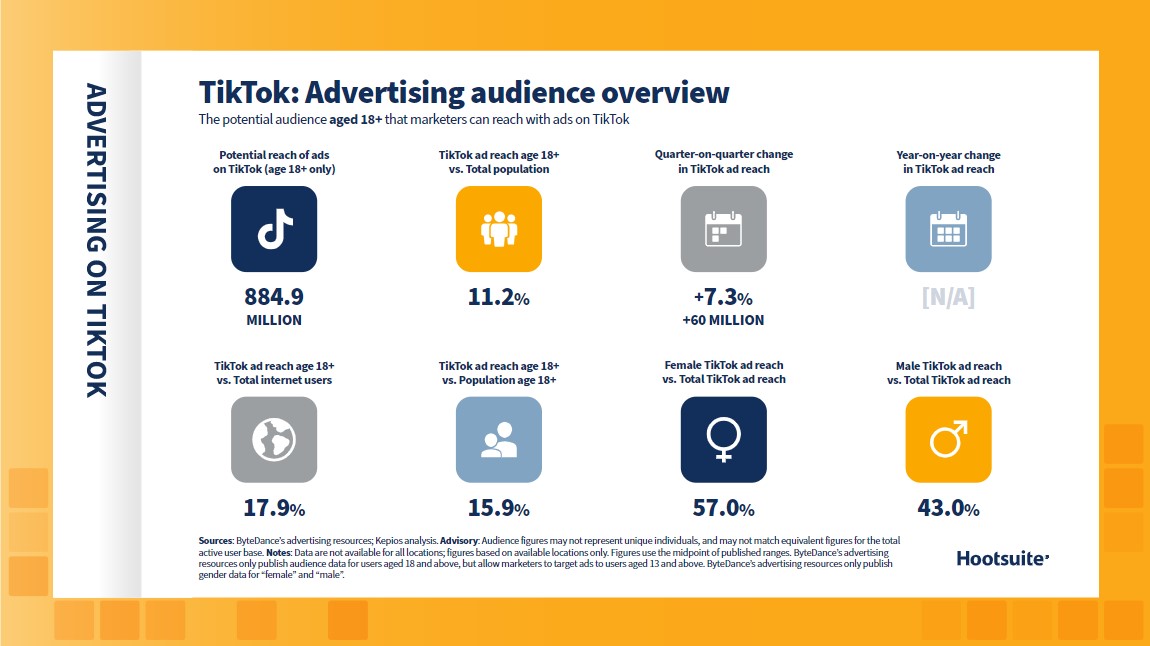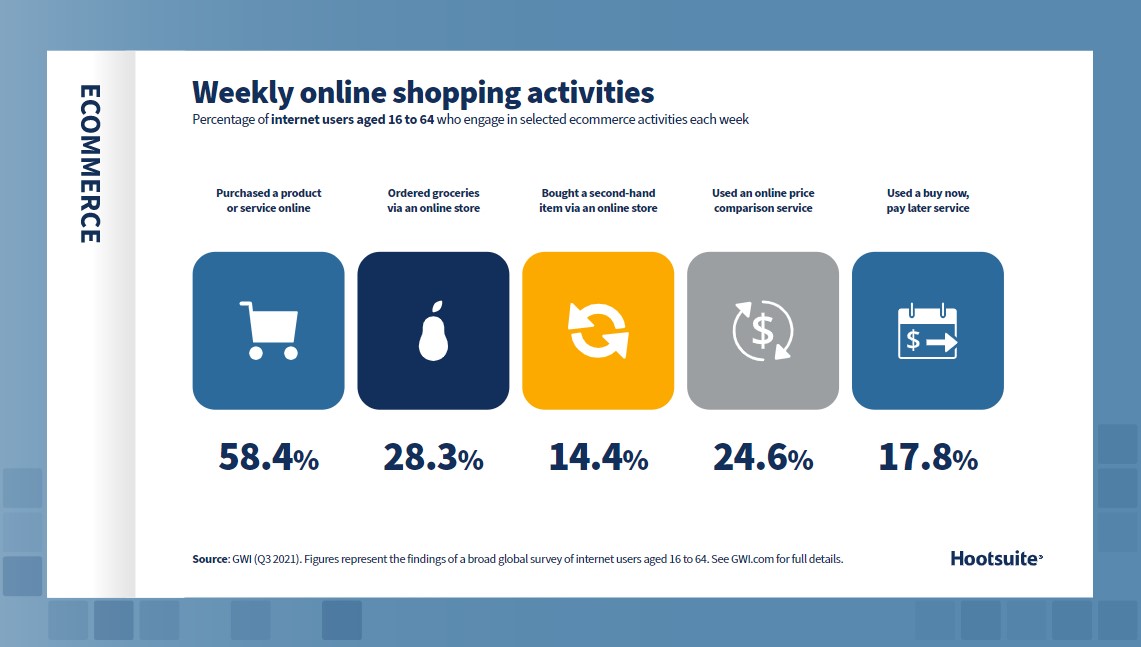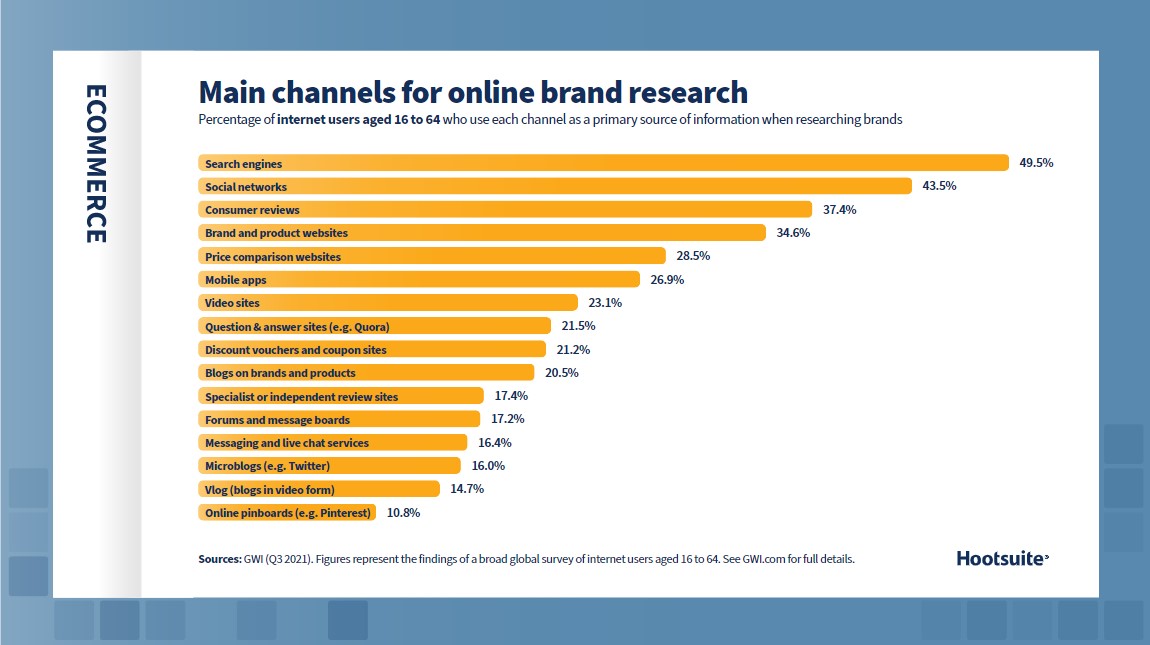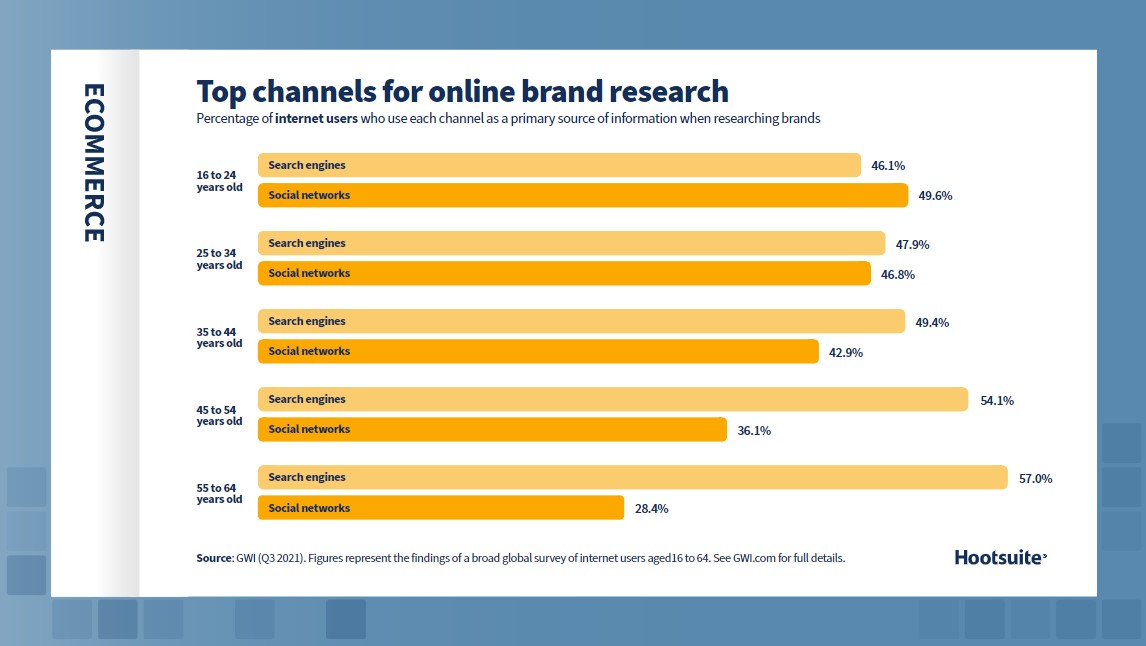
What Are The Top Social Media Trends 2022?
My friends at Hootsuite have released this year’s digital report and, as ever, it’s full of fascinating insights into the world’s online behaviours.
The full report analysis data from 230 countries and territories, offering a global perspective on how people are using all things online, and predictions for our digital future that will help your business stay ahead.
The full report (which you can download here: Digital 2021 - Social Media Marketing & Management Dashboard - Hootsuite) is pretty detailed. It’s worth a read, so to whet your appetite here are some of the main take-outs.
1. Social media use
According to Hootsuite’s report, there are now 4.62 billion social media users around the globe (note: the term ‘users’ may not represent unique individuals). That’s up 424 million users (or +10.1%) on last year.
Source: Digital-2022-Top-Takeaways.pdf (widen.net) (4)
It represents around 75% of the world’s population over the age of 13, and users spend an average of just under two and a half hours per day on social media.
This global expansion in social media use gives your brand more opportunities to be seen by your audience.
But it’s also important to recognise that social media use is split, on average, across 7.5 different platforms.So to maximise opportunities to get your brand in front of your audience, you need to have a presence across multiple platforms, AND tailor your content according to the user experience for each one.
2. The world’s most-used social media platforms in 2022
Here’s the leaderboard according to Hootsuite’s research. No real surprises in terms of the most-used platform. Facebook still leads the field, by quite a long way.
Source: Digital-2022-Top-Takeaways.pdf (widen.net) (6)
So it’s pretty clear that there are benefits to your brand to having a presence on Facebook. But with so many users, and so many other brands, you need to think carefully about how you manage your content.
There are many different ways in which your content can cater for the experiences offered by Facebook, so it’s important to understand how your specific audience interacts with you here.
Facebook groups – does your audience engage with them? These digital communities have become increasingly meaningful to many social media users, so if your audiences have strong engagement, so should you.
Facebook advertising – the potential reach is huge, so it may be time to consider (or revisit) running ads here.
It’s also worth noting that whilst Facebook is top of the ‘most-used’ list, when it comes to users aged 16-24, their favourite is WhatsApp. If your audience is in this bracket, you might want to consider whether a WhatsApp Business account would be a good move in terms of communication options with your customers.
3. Who uses which platforms?
As we’ve already seen, most social media users are on more than one platform. This makes it easier for you to reach people, but it’s important to be aware of the different mindsets for platform use and tailor your content accordingly.
Source: Digital-2022-Top-Takeaways.pdf (widen.net) (12)
You’ll need to think about tailoring your content to the reasons why people are on that platform. Which platforms and their users are best aligned with your business goals, and what content will work best for them?
4. Social media advertising
In 2021, social media advertising represented around a third of global digital advertising spend.
That’s an increase of $23 billion (or 17.4%) on the previous year on social media advertising. That’s despite many brands having reduced their overall marketing budgets during the pandemic.
More than half of the marketers Hootsuite surveyed for their report said their paid social spend is likely to increase in 2022, as well.
They aren’t spending it all on the top platforms, though. Many marketers, as well as spending on Facebook, Instagram and Twitter, are seeing channels like TikTok, Snapchat and Pinterest as emerging priorities.
5. TikTok as a marketing tool
TikTok has been developing its opportunities for marketers in recent months. It’s particularly popular with the 16-24 age-group. I took a look at the platform’s growing portfolio of marketing tools in my Marketers Guide to TikTok.
TikTok is becoming such an important marketing tool for many brands, that Hootsuite have analysed it’s advertising audience in more detail.
Source: Digital-2022-Top-Takeaways.pdf (widen.net) (18)
TikTok has a huge potential reach of 884.9 million users over 18. The report doesn’t give a year-on-year comparison here (perhaps because TikTok advertising is a relatively new phenomenon), but that’s up 60 million (7.3%) on the previous quarter.
What is perhaps most useful for brands is the analysis of TikTok advertising audiences by age group and gender.
Source: Digital-2022-Top-Takeaways.pdf (widen.net) (19)
Unsurprisingly, the largest group on the platform is 18-24 year-olds, followed by 25-34 year-olds.
But with the massive number of users, it’s not just those age groups that you can engage.
And remember, a strategy encompassing TikTok doesn’t necessarily mean increasing reach. It’s an ideal platform for changing perceptions – or strengthening them – if you are looking to position your brand as bolder, or more cutting-edge. If you’ve got quality, entertaining content, it could be a great fit for TikTok audiences. At the very least, it could be a platform to think about or experiment with.
6. Online shopping habits
If you’re a brand that deals in e-commerce, this next slide is for you. Hootsuite have analysed a wider report to look at the percentage of internet users aged 16-64 who use selected e-commerce activities each week.
Source: Digital-2022-Top-Takeaways.pdf (widen.net) (22)
The top line here is that almost 60% of internet users bought something online every single week.
Talking about consumer goods alone, 2021 saw people spend $3.85 trillion online, an increase of 18% ($591 billion) on 2020.
We know, of course, that the pandemic drove a dramatic increase in online shopping around the world, but that trend seems set to continue, especially now that social media platforms have capitalised on it and increased their online shopping tools.
Hootsuite recommends taking a good look at your social storefronts across your channels to ensure a seamless and enjoyable shopping experience rather than simply a transactional relationship. Many shoppers appreciate the opportunity to compare products and to share with friends, for example.
7. Online shopping research
How do internet users research what to buy and where to buy from? Hootsuite has looked at this, too.
Source: Digital-2022-Top-Takeaways.pdf (widen.net) (25)
Overall, search engines are the main source of information, closely followed by social media networks. But of the younger age groups those 16-24 yearsprefer social networks, and for those 25-34 search engine are only just ahead.
Source: Digital-2022-Top-Takeaways.pdf (widen.net) (26)
Remember, again, it’s the experience that’s important. The ability to ‘buy now’ whichever platform you’re on is vital, but positive comments, likes and customer reviews are influential drivers when it comes to prompting that all-important click.
These are the main take-outs from the full report. The complete report also includes some useful, more in-depth insights into online behaviour including the most-used devices and advice about strategy.
Download the full report: Digital 2021 - Social Media Marketing & Management Dashboard - Hootsuite
Hint: brands need to be focussing on:
- Social experience to ensure every step of the purchase journey is positive and aligned
- Customer care – using social as a key tool
- Understanding user-behaviour, especially Gen-Z
If you’d like to talk about how to build or develop your digital strategy to take advantage of the trends developing in 2022, get in touch. I’d love to chat.
Gordon Glenister is the author of a new book, Influencer Marketing Strategy. Learn:
- how to build an influencer strategy
- what makes a great influencer
- about the rise of Clubhouse and Tik Tok
- about future digital trends for connecting with a digital customer
Order your copy at:Gordon Glenister | Membership and Merchandise Specialist London
Find out more at: https://gordonglenister.com/book-launch


